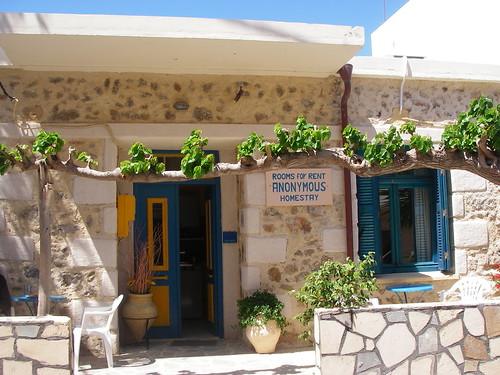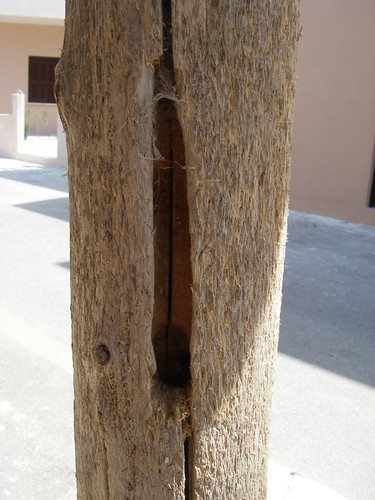Urmentrude’s Dwelling
In many towns and villages around Crete, plane trees line the streets, their branches trained to grow near horizontally with the aid of weights tied to their tips. During the hot summer these trees offer welcome shade, as well as gaudy splashes of green. In the smaller settlements they are often found at entrances, and this was also true for the Anonymous Homestay where we stayed during our time in Palaeochora.

The trees, or in this case their support stuctures, also give shelter to other species. The post that supported the branch which grew across the terrace entry had a thumb-sized hole in it, from which buzzing emanated at times. This was the home of Urmentrude, a European carpenter bee (Xylocopa violacea).
Every twenty minutes to half-an-hour throughout the day, Urmentrude would shoot out of the hole (which barely fitted her girth) and dart off towards the gardens and shrubs heavy with flowers. In the mornings, when we were having coffee outside, she would stay around and circle for a while, as if inspecting us. I flinched at first—carpenter bees are big—but she never approached too closely, nor would she waste her energy on something not perceived as a threat.
Still, you wouldn’t want to mess with her kind.
Despite her massive proportions, she was always too quick for me to get a picture, so here’s one of her dwelling:
Recently, carpenter bees have become established in England, one of many continental/southern European insects which may be extending their ranges as a result of climate change (for the doubters among you: zoologists have kept tap on these phenomena for at least twenty years, as I remember from my undergraduate days).
Tags: Carpenter bees, Chania, climate change, door trees, Greece, Greece, Tag Index